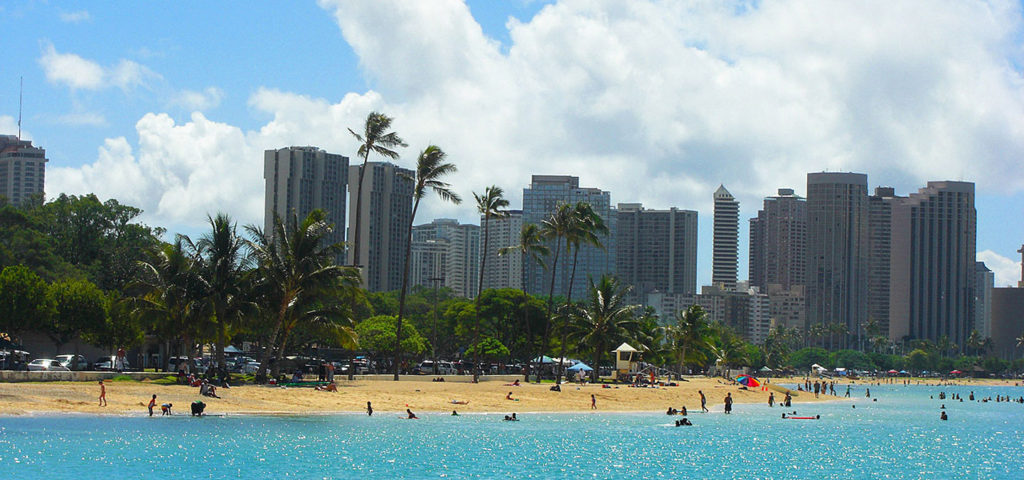As traumatizing as it must have been to go through the recent events in Hawaii, it’s an stark reminder of what occurred not so long ago. If the alert was put out where you lived, would you and your family have a plan? What if you were out running errands or driving on the highway? Would you know what to do or where to go?
The recent media interviews showed a terrified public who lacked a clear understand of the issue, or what to do when the incoming missile alert was broadcast. It seemed the only thing everyone could agree on was to take to posting on social media.
How Times Have Changed
Americans haven’t faced a credible ballistic missile threat in over 75 years. The last threat was during WWII and even that was a remote possibility aimed at the Eastern seaboard. Hawaii faced a multitude of other threats and actual attacks during the war, however a ballistic missile wasn’t among them. (Also for the history buffs, Hawaii wasn’t even a state during the war!)
For the purposes of this discussion, I’ll leave nuclear threats as a separate issue due to their magnitude and actual potential possibility during the Cold War. The nuclear threat did give additional credence to the civil defense bombing plans deployed in WWII, as futile as they likely would have been in the wake of a true nuclear attack.
Our civil defense plans and initiatives were initially developed during World War One and expanded extensively during World War Two. They were most actively tested during the Cuban Missile Crisis in October of 1962.
Older generations will recall actually constructing bomb shelters and stocking safe rooms with supplies. Planning and preparations weren’t just a good idea or a thought for later, this was reality and preparing for this possibility was truly a life or death scenario.
After the Cold War ended, the threat of a missile strike in the U.S. became a distant memory, as we enjoyed relative peace and prosperity. A new generation was raised without the shadow of a missile strike and preparations and planning fell away to memory. Grainy black and white movie reels of children scrambling to get under the desks at the behest of a spooky narration are likely the most vivid images post “Cold War kids” have from this time.
The “test” of the missile alert system in Hawaii last week was prudent and as other missile tests began again in December, there’s clearly a concern amongst emergency management officials.
Hawaii sits well within the ballistic missile range of the Taepodong-2 missile and has been threatened by Kim Jong Un on multiple occasions. Hawaii is also home to the United States Pacific Command, making it a likely first strike target. A successful missile strike would cause significant damage and cripple infrastructure. Military units would be focused on preparing for the inevitable response and their manpower would be focused on repairing and replacing damaged military resources.
Stranded
A quick geography refresher, Hawaii is quite some distance from the mainland United States. Following a missile strike, high level relief efforts would take time to prep and deliver. If you want a recent example of relief efforts to an island nation not going quickly, please ask anyone from Puerto Rico. We literally watched the storms tracking towards the island for days and relief efforts still took a substantial amount of time to arrive. An inbound missile strike would come without prior warning and relief agencies wouldn’t have any time to prepare or stage resources and manpower to respond to the damages and devastation.
The execution of this “test” clearly leaves much to be desired. There’s obviously been a significant breakdown in the planning and execution of this system. A false alarm notice should not take 38 minutes to be issued. During this time people were truly scared for their lives. In light of the multiple threats and increasingly bellicose rhetoric from North Korea, along with several recent tests, it was surprising to see how many people were truly unprepared.
Hawaiian officials need to take an honest and candid view of this event. People need to be confident in their warning and alert systems for them to be effective, lest we “cry wolf” too often. Hawaiian officials have already suspended any additional tests and are planning to implement a two-factor authentication safeguard. There are also scattered reports that the alerts weren’t received on some phones and some warning sirens didn’t sound. As terrible as it was, the test highlighted critical vulnerabilities that can be repaired and hopefully the public received a crucial wake up call.
If you don’t have an emergency response plan or haven’t discussed it with you family, now’s the time. It doesn’t have to be preparation for a ballistic missile threat; blizzards, ice storms, hurricanes and earthquakes are all potential emergency situations that you can begin discussing. The basics of a sound plan remain the same for all emergencies. Having a well rehearsed and communicated plan is critical your well-being. In the same amount of time it took for Hawaii to issue a false alarm, (38 minutes) you could have a solid foundation for a multi-threat emergency plan underway.
Editor-in-Chief’s Note: Please join us in welcoming Timothy Reed as an ITS contributor. Timothy is a Security Consultant with nearly 20 years experience. He’s developed plans for expatriate support and evacuation procedures, pandemic response, as well as security plans to align with the U.S. Dept. Of Homeland Security Critical Infrastructure Protection Plan. He’s worked extensively in the Asia/Pacific area, currently residing in China.
